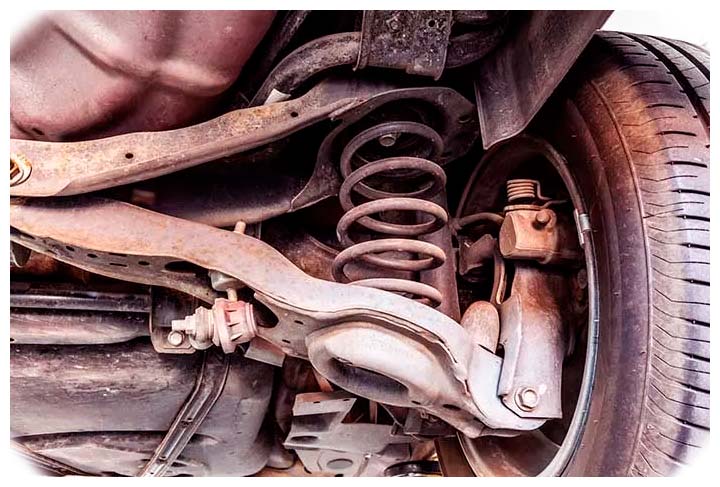A steering wheel moving side to side is frustrating and poses a significant safety risk. Identifying the cause behind this issue is crucial to fix it properly and ensure safe driving. A common culprit for a side-to-side steering wheel movement is a worn or damaged suspension component, such as tie rod ends, ball joints, or bushings. These parts play a vital role in maintaining stability and smooth steering. Over time, they can wear out due to normal usage or harsh driving conditions, leading to the undesirable movement of the steering wheel. In the following sections, we will explore the symptoms of worn suspension components, guide inspecting them for wear and tear, and offer step-by-step instructions for replacing damaged parts. By following these steps, you can regain control of your steering wheel and restore the stability of your vehicle’s steering system. Remember to prioritize safety and seek professional assistance if needed.
Symptoms of a Worn Suspension Component

Checking Suspension Components for Wear and Tear
In this section, we’ll guide you systematically in inspecting the various suspension components for wear and tear. Start by visually examining the condition of key parts such as tie rods, ball joints, control arms, and bushings. Look for signs of damage, excessive play, or visible wear, such as cracks, rust, or loose connections. Additionally, perform a hands-on inspection by gently applying pressure and checking for movement or looseness. By carefully assessing the components and comparing them to their ideal condition, you can determine if any parts require replacement or repair. We’ll provide detailed instructions and useful tips to ensure you conduct a thorough evaluation, including guidance on the appropriate tools and safety precautions.
Replacing Worn or Damaged Parts
Once you’ve identified the specific components responsible for the side-to-side movement of your steering wheel, it’s time to act and replace them. Gather the necessary tools, including wrenches, socket sets, and reliable jack and jack stands. Safety is paramount throughout this process, so follow proper lifting procedures, use appropriate protective gear, and secure the vehicle on a stable surface. We’ll guide you through the step-by-step process of correctly removing worn or damaged parts and installing new ones. Clear instructions, diagrams, and helpful tips will assist you in completing the replacement with confidence and precision. Additionally, we’ll provide insights on potential challenges you might encounter and offer troubleshooting suggestions to overcome them.
Conclusion
A steering wheel that moves side to side can be problematic, but with the knowledge and guidance provided in this article, you can successfully diagnose and resolve it. By familiarizing yourself with the symptoms of worn suspension components, conducting thorough inspections, and replacing damaged parts, you’ll restore stability and control to your car’s steering system. Remember to prioritize safety throughout the process and consult a professional if needed. Taking the necessary steps to fix your steering wheel will not only ensure a smoother and safer driving experience but also contribute to your vehicle’s overall longevity and performance. Get started today and regain confidence in your steering control.


Add Comment